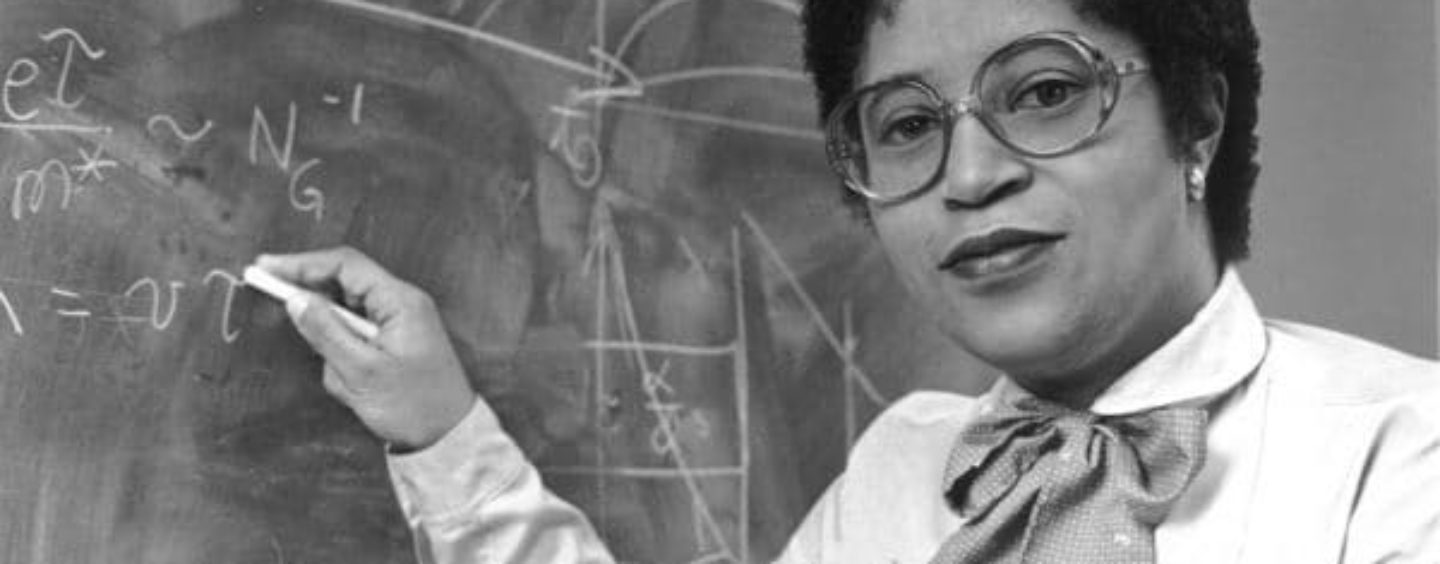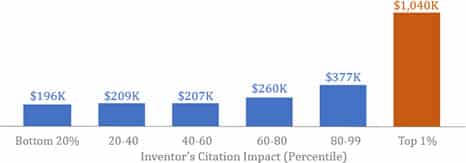
Greater Potential for Innovation Exposure by Socioeconomics, Race, and Gender
by Kathy Grear 02/05/2018Caption innovation exposure: Dr. Shirley Jackson – Research that led to the invention of all things telecommunication The theoretical physicist was the first black woman to receive a Ph.D. from the Massachusetts Institute of Technology in 1973. While working at Bell Laboratories, she conducted breakthrough scientific research with subatomic particles that enabled others to invent the portable fax, touch tone telephone, solar cells, fibre optic cables, and the technology behind caller ID and call waiting. Imagine all the important information you would have missed without this amazing woman!
Who Becomes an Inventor in America? The Importance of Innovation exposure
Study by Alex Bell, Raj Chetty, Xavier Jaravel, Neviana Petkova, and John Van Reenen
Our results shed light on what policies can be most effective in increasing innovation exposure among women, minorities, and children from low-income families and may have greater potential to spark innovation and growth than traditional approaches such as reducing tax rates.
We study the lives of more than one million inventors in the United States using a new de-identified database linking patent records to tax and school district records. Tracking these individuals from birth onward, we identify the key factors that determine who becomes an inventor, as measured by filing a patent.
Our analysis yields three main lessons.
Who are America’s most successful inventors and what can we learn from their experiences in designing policies to stimulate innovation? Innovation is widely viewed as the engine of economic growth. As a result, many policies have been proposed to spur innovation, ranging from tax cuts to investments in STEM (science, technology, engineering, and math) education. Unfortunately, the effectiveness of such policies is unclear because we know little about factors that induce people to become inventors.
Lesson 1: There are large disparities in innovation rates by socioeconomic class, race, and gender.
Children with parents in the top 1% of the income distribution are ten times more likely to become inventors than children with below- median income parents (Figure 1). There are analogous gaps by race and gender: white children are three times more likely to become inventors than black children and only 18% of inventors are female. The gender gap in innovation is shrinking gradually over time, but
Children from high- income families are ten times more likely to become inventors than children from low- income families.
at the current rate, it will take another 118 years to reach gender parity.
1 Not all patents are meaningful new inventions; however, we show that focusing on the subset of patents that have the most substantial scientific impact, as measured by future citations, generates very similar results to those discussed below.

Figure 1. Patent Rates vs. Parent Income
Differences in ability, as measured by test scores in early childhood, explain very little of these disparities. Children at the top of their 3rd grade math class are much more likely to become inventors, but only if they come from high-income families (Figure 2). High-scoring children from low-income or minority families are unlikely to become inventors. Put differently, becoming an inventor relies upon two things in America: excelling in math and science and having a rich family.

Figure 2. Patent Rates vs. 3rd Grade Math Test Scores for Children of Low- vs. High-Income Parents
The gap in innovation explained by test scores grows in later grades; by 8th grade, half of the gap in innovation by income can be explained by differences in test scores. This is because low-income children steadily fall behind their high- income peers over time, perhaps because of differences in their schools and childhood environments. We next turn to analyze what specific environmental factors contribute to these disparities.
Lesson 2: Innovation exposure substantially increases the chances that children become inventors.
Children who grow up in areas with more inventors – and are thereby more exposed to innovation while growing up – are much more likely to become inventors themselves. Innovation exposure influences not just whether a child grows up to become an inventor but also the type of inventions he or she produces. For example, among people living in Boston, those who grew up in Silicon Valley are especially likely to patent in computers, while those who grew up in Minneapolis
– which has many medical device manufacturers – are especially likely to patent in medical devices. Similarly, children whose parents hold patents in a certain technology class (e.g., amplifiers) are more likely to patent in exactly that field themselves rather than in other closely related fields (e.g., antennas).

Figure 3. The Origins of Inventors: Patent Rates by Area Where Children Grow up
Darker colors denote areas where more children grow up to become inventors. The five cities that produce the most inventors per capita in America are highlighted.
Our findings are consistent with recent evidence that innovation exposure to better neighborhoods in childhood improves children’s life outcomes. Neighborhood effects have typically been attributed to factors such as school quality or residential segregation. Since it is implausible that some neighborhoods or schools prepare children to innovate in a single field, such as amplifiers, the innovation exposure effects here are more likely to be driven by mechanisms such as mentoring, transmission of information, and networks.
Exposure matters in a gender-specific manner. Women are more likely to invent in a given technology class if they grew up in an area with many female inventors in that technology class. Growing up around male inventors has no impact on women’s propensity to innovate. Conversely, men’s innovation rates are influenced by male rather than female inventors in their area.
Children from low-income families, minorities, and women are less likely to have such innovation exposure through their families and neighborhoods, helping explain why they have significantly lower rates of innovation. For example, our estimates imply that if girls were as exposed to female inventors as boys are to male inventors, the gender gap in innovation would fall by half.
Stepping forward in children’s lives, we find that innovation rates vary widely across colleges, but students from low- and high-income families at the most innovative colleges (e.g., MIT) patent at relatively similar rates. This finding reinforces the view that factors that affect children before they enter the labor market, such as childhood environment and innovation exposure, drive much of the gaps in innovation we uncovered.2
If girls were exposed to female inventors during childhood at the same rate that boys are to male inventors, the gender gap in innovation would fall by half.
Lesson 3: Star inventors earn more than $1 million per year, suggesting that further increasing financial incentives or reducing tax rates may have small effects on innovation.
The average patent holder earns approximately $256,000 per year in his or her mid-forties. But the individuals who make discoveries that have the greatest scientific impact – i.e., those who produce the most highly-cited patents – earn more than $1 million on average per year (Figure 4). Scientific progress is largely driven by a few star inventors who are highly compensated for their work by the market.

Figure 4. Inventors’ Annual Incomes by Scientific Impact
This result also weighs against the hypothesis that a lack of access to funding or an aversion to risk discourage low-income students from pursuing innovation, as those factors would generate gaps in innovation rates even among students attending the same college.
Women, minorities, and individuals from low income families are as under- represented among star inventors as they are among inventors as a whole. Given our finding that innovation ability does not vary substantially across these groups, this result implies there are many “lost Einsteins” – people who would have had high-impact inventions had they become inventors – among the under-represented groups.
These findings suggest that changes in financial incentives (e.g., by reducing tax rates) have limited scope to increase innovation, for two reasons. First, changes in incentives affect only the small subset of individuals who have innovation exposure.
There are many “lost Einsteins” – people who would have had highly impactful inventions had they been exposed to careers in innovation as children.
Second, such policies are unlikely to influence the decisions of star inventors who matter most for economic growth. Star inventors – who typically earn more than $1 million per year – would presumably be happy to work in their field even if they earned say $950,000 instead of $1 million per year.3 We caution, however, that these predictions remain to be tested empirically and that taxes could potentially affect economic growth through other channels, for instance by changing the behavior of firms or other workers.
Policy Implications
If women, minorities, and children from low-income families were to invent at the same rate as white men from high-income (top 20%) families, the rate of innovation in America would quadruple. Our findings therefore call for greater focus on policies that harness the under-utilized talent in these groups by providing them greater innovation exposure. Such policies could range from mentoring programs to internships to interventions through social networks.
Our analysis does not tell us which programs are most effective, but it does provide some guidance on how they
Improving opportunities for upward mobility may increase innovation and economic growth
should be targeted. Targeting innovation exposure programs to children from under-represented groups who excel in math and science at early ages is likely to maximize their impacts. Furthermore, tailoring programs to participants’ backgrounds may be valuable: for example, women are more influenced by female rather than male inventors.
More broadly, our results suggest that improving opportunities for disadvantaged children may be valuable not just to reduce disparities but also to spur greater innovation and growth.
Even if people are uncertain about their chances of becoming a star when deciding whether to pursue innovation, tax changes are unlikely to have large effects. The payoffs to innovation are similar to a buying a lottery ticket. Most of the time one doesn’t win (in which case tax rates don’t matter), but sometimes one hits the jackpot and wins millions (in which case a slightly smaller payout won’t reduce interest in buying a ticket by much).



No Comments so far
Jump into a conversationNo Comments Yet!
You can be the one to start a conversation.Only registered users can comment.